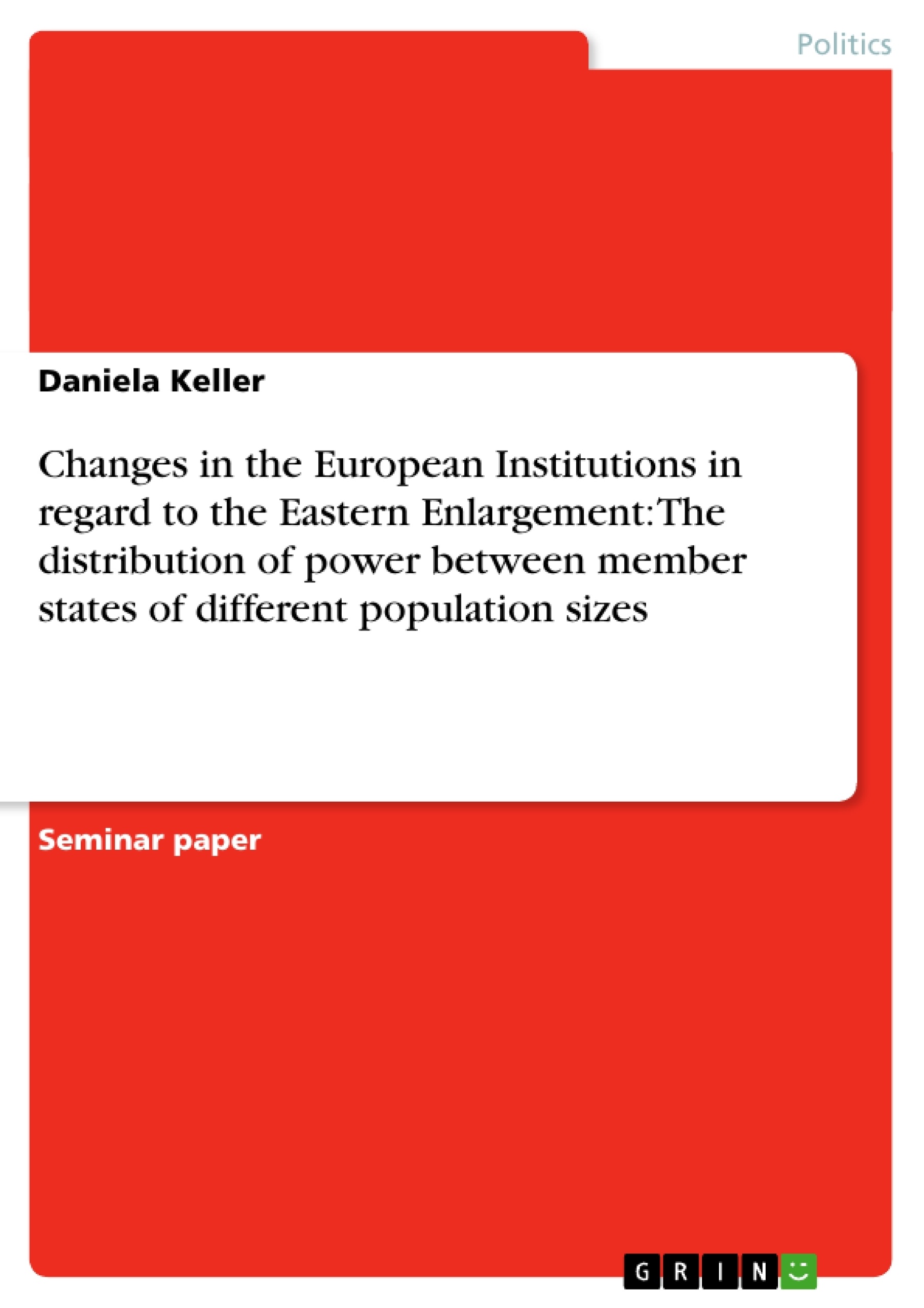A paper presented at the European Union Center of California
How did the power structures of the institutions adopt to the situation of involving ten new member states, which are mostly consisting of smaller populations. The development of power structures in the European institutions in regard to the European enlargement are investigated in this paper. A comparison of the different European institutions and their importance comes to the conclusion that, overall, the bigger states enlarged their power due to the European enlargement.
Inhaltsverzeichnis (Table of Contents)
- The Eastern Enlargement of the European Union, 05-01-2005, and the EU institutions: A distribution of power by the number of states or by population?
- Changes in the European Commission
- Tasks of the European Commission and ways of change in regard to the Eastern Enlargement
- The European Parliament
- Changes in the European Parliament
- Discussion about and explanations for the distribution of seats in the European Parliament
- The Council of Ministers
- Changes in the Council of Ministers
- Discussion about and explanations for the changes in the Council of Ministers
- The European Council
- Changes in the European Council
- Explanations for the changes in the European Council
- Changes in further EU-Caucuses
- The European Court of Justice
- The European Court of Auditors
- The European Economic and Social Committee
- The Committee of the Regions
- Conclusion
Zielsetzung und Themenschwerpunkte (Objectives and Key Themes)
This research paper examines the impact of the Eastern Enlargement of the European Union on the distribution of power within the EU institutions. It focuses on the changes and challenges faced by the European Commission, European Parliament, Council of Ministers, European Council, and other EU caucuses in light of the addition of ten new member states.
- The influence of the Eastern Enlargement on the balance of power within the EU institutions
- The role of population size in determining the distribution of power among member states
- The impact of the Nice Treaty and the Constitutional Treaty on the restructuring of EU institutions
- The different models proposed for the European Commission and their implications for power dynamics
- The power dynamics within the EU institutions between smaller and larger member states
Zusammenfassung der Kapitel (Chapter Summaries)
The paper begins by outlining the significance of the Eastern Enlargement and its impact on the EU, particularly the introduction of a large number of new member states with smaller populations compared to existing members. It then delves into the changes and power dynamics within the European Commission, exploring the roles and responsibilities of the institution and the different models proposed for its restructuring. The next chapter focuses on the European Parliament, examining the changes in its structure and the debates surrounding the distribution of seats in the aftermath of the enlargement.
Schlüsselwörter (Keywords)
The primary keywords and focus topics of the paper include Eastern Enlargement, EU institutions, distribution of power, member states, population size, Nice Treaty, Constitutional Treaty, European Commission, European Parliament, Council of Ministers, European Council, and power dynamics.
- Quote paper
- Daniela Keller (Author), 2005, Changes in the European Institutions in regard to the Eastern Enlargement: The distribution of power between member states of different population sizes, Munich, GRIN Verlag, https://www.grin.com/document/37348



